We all know we should shut down our Macs or put them to sleep when we’re not using them. But it’s very easy to get lazy and leave them on all day long. How much money are you wasting on electricity by doing that? After a few calculations, you should be able to figure out just how much our Macs cost to run.
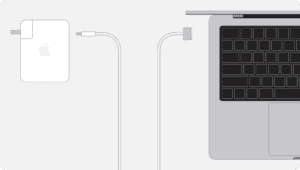
Computers are not expensive products to use in terms of power, but if you use yours a lot, it can have a small impact on your bills.
According to research on energy usage, an 8-hour workday on a desktop computer requires 600 kWh of electricity per year, costing you a whopping $84. In contrast, using a laptop will require 225kWh of energy per year. That would amount to $32 per year – and that’s assuming you use your laptop for 8 hours every day.
So how much are you paying to power your Mac, and how can you reduce it?
What Factors Affect The Cost of Running a Mac?
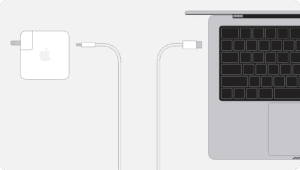
The cost of running your Mac will vary widely based on the following factors:
Location
The Energy Information Administration states the average price people in the U.S. pay for electricity is about 12 cents per kilowatt-hour. But the cost of electricity varies from state to state. For example, Louisiana and Washington average less than 10 cents/KWh, while Hawaii is over 30 cents/KWh. So it helps to know what electricity costs in your city.
Computer Components
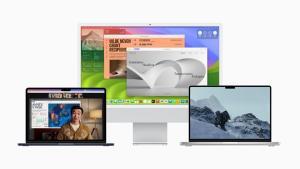
A Mac’s power consumption primarily depends on the size of its screen and the speed of its CPU and GPU. A Mac’s screen uses a large portion of its overall energy, so large-screen Macs are generally more expensive to run. A Mac with a high-end CPU or GPU will also use significantly more power when those components are in use. For example, a powerful iMac with top-of-the-line components will spend more electricity under load than a MacBook with a low-power CPU.
Usage
All tasks do not consume the same amount of power. Some do not put much stress on the battery, while others may deplete your Mac’s battery quickly.
Someone running resource-intensive tasks like gaming, video editing, or virtual machines will consume more power than light web browsing or document editing, even if they did so on the exact same computer for the same number of hours each day.
How to Measure Your Mac’s Electricity Usage

Since power consumption can vary so much from Mac to Mac (and person to person), the best way to find out your electricity cost is to measure it yourself.
If you’d like to know exactly how much electricity your Mac uses, you should purchase a watt meter. A watt meter is a small device you plug into your wall. You then plug your electrical devices into it, and the device shows you exactly how much power is being used.
Measuring your Mac’s electricity consumption using a watt meter is easy: turn everything off, plug your Mac into the watt meter, then plug the meter into the wall. (I recommend plugging your entire surge protector into the watt meter—that way, you measure not just Mac’s energy usage but the monitor, speakers, and other peripherals as well).
Push the button on your watt meter, then turn your Mac back on and use it as you normally would.
Check the watt meter once a day to ensure it hasn’t lost power and reset to zero. I recommend waiting a week so it has a good usage period with which to work.
Calculate how much energy your Mac uses

If you want to know how much electricity your Mac uses, record the number displayed on your watt meter after a week, making sure the button is pressed, and you’re getting the right figure. From this point, it’s just a bit of simple math: Multiply that figure by the cost of electricity in your area (if your city employs tiered pricing based on the time of day, simply use the average rate for your city to get a ballpark figure). The result is how much your Mac costs to run for one week.
For my tests, I left my Mac on for about 12 hours each weekday, about eight of which it was actively used. Since I work from home, and the other four, it was left idle. Weekends saw only a few hours of use, with me letting the Mac sleep most of the day.
For me, a typical weekday workload includes lots of web browsing and document writing, with occasional gaming and other heavy workloads. At the end of the week, my watt meter read 11.02 kWh of usage. Since the average cost of electricity is around 28 cents/KWh where I live, my weekly cost is roughly: 11.02 KWh x $0.28/KWh = $3.08 per week, and so $3.08 x 52 weeks/year gives us a yearly estimate of $160.16 per year.
What to Make of the Results

Given that I let my Mac idle for a few hours a day, it’s easy to see how putting my Mac into sleep mode could probably save me $30-$50 per year.
It may not seem like much, but the multiplier effect is where you can see its really worth. For example, if America’s 10 million households each saved five cents’ worth of electricity — 0.32kWh each — that would be the equivalent of 3.2 million kWh saved — the equivalent of 13,760 tonnes of CO2.
Is your Mac costing you more than you think?
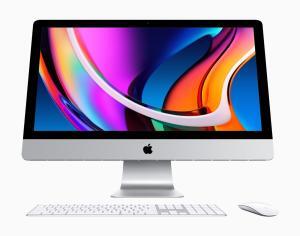
Saving electricity (and money) is always easier when you know how much your Mac is actually using.
To calculate your costs use this formula:
Watts x Hours Used x Cost per kilowatt-hour = Total Cost
For example, let’s say you have a big high-end iMac connected to an external graphics processor and an old CRT monitor, and you leave them on 24/7. That’s about 200 watts x 24 hours x 365 days/yr = 1,752,000 watt-hours, or 1752 kilowatt-hours. If you’re paying $0.36 per kWh, you’re paying $631 a year to run your Mac. (In California, PG&E’s highest tier is $0.33/kWh, and the average in Hawaii is $0.36/kWh.
Let’s try a different example: You have a Mac that’s less of an energy hog, like an iMac G5 20", which uses about 105 watts, and you’re smart enough to turn it off or sleep it when you’re not using it. You use it for two hours a day, five days a week. That’s 105 watts x 10 hours/week x 52 weeks/year = 54,600 watt-hours, or 54.6 kWh. If you’re paying 10¢ per kilowatt-hour, then you’re paying about $5.50 a year to run your Mac.
That’s quite a range, $5.50 to $631 a year. It really depends on what kind of Mac it is, how much you use it, and your local rate for electricity — and especially whether you turn off the Mac when you’re not using it (or at least sleep it).
Your situation is almost certainly different, and you need to consider all the variables listed in the first sentence of this paragraph.
How to Prevent Your Mac from Inflating Your Electricity Bill
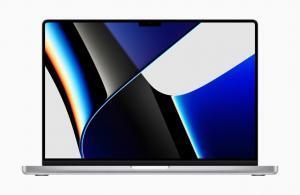
If you’d like to reduce how much power your Mac uses, here are various ways to do so:
Adjust your Mac’s energy settings
Adjusting your Mac’s power settings will help you consume less energy. For example, lowering the brightness of your screen is a simple adjustment that has a big impact.
Keeping the screen brightness at the lowest comfortable setting help with eye strain and save power. Even just a few notches down from full brightness will help you save power.
Shut Down Your Mac When Not in Use
When you’re not using your Mac, it’s best to shut it down and unplug it. This is because a plugged-in Mac — even when switched off — still consumes standby power.
It doesn’t take more energy to start a Mac than to keep it running. The only extra energy it takes to start a Mac is the ten seconds or so it takes to start up, which is barely different than any other ten seconds of use. You’ll always save energy by shutting down your Mac when you’re not using it.
The myth that turning the device off uses more energy than keeping it on exists for just about every device, and it’s wrong in every single case. (Meaning, you will never, ever, ever see any savings on your electrical bill by keeping something on all the time vs. turning it off. Period.) You will always save electricity by turning your Mac off when you’re not using it.
Disconnect external devices when not in use
Another simple way to lower your computer’s energy consumption is to unplug accessories when you aren’t using them.
Devices such as printers, external speakers, and scanners can drain power even when you aren’t using them. This phantom power loss occurs because these devices actually switch to standby mode when they are off but still plugged in.
While standby power uses significantly less electricity than when the device is turned on and in use, this 24-hour energy drain still adds up on your electric bill.
To cut off phantom power loss, simply unplug external devices when you are done using them.
Alternatively, use a smart strip
A smart strip is a series of several electrical outlets in one strip, with circuits to monitor and maximize your gadgets’ power consumption.
By connecting your Mac and external devices (e.g., printers, scanners) to the smart strip, you won’t need to unplug your equipment when you’re not using them.
A smart strip can give you the control to shut off each device individually so that they stop drawing current, which saves energy.
Unplug Your Mac when Fully Charged
Leaving your MacBook plugged in after it’s fully charged can result in a significant waste of energy. This is because your computer continues to draw power even when it is not charging.
Make sure to unplug your MacBook once it is fully charged. By doing so, you can save a considerable amount of energy and reduce your electricity bill.
Use a charger only when your Mac is charging
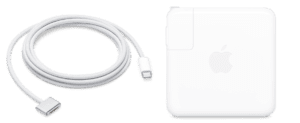
Leaving the charger plugged in, even when it’s not connected to your Mac, consumes standby power.
To save energy, unplug your Mac charger once you’re done charging. You can try using a wall outlet with a timer or consider plugging your charger into a smart strip.
Know How Much Electricity Your Mac Uses
Even though a Mac won’t break the bank in electricity costs, it’s prudent to keep an eye on it and try to reduce it as much as possible. This small expense, when added up to the annual electricity bill, can add up to quite a bit.
Hopefully, this guide will help you figure out the actual electricity your Mac use and how to minimize consumption.
